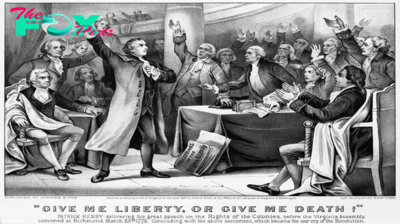History
The Regional Origins of America’s First Comprehensive Federal Immigration Law
A century ago on May 26, 1924, President Calvin Coolidge signed into law the Immigration Restriction Act and proclaimed: “America must remain American.” Coolidge alluded to a slogan popularized by the Ku Klux Klan: “America for Americans.” With the passage of the new law, the Klan’s racist, white supremacist, and xenophobic worldview had become mainstream, supported by Democrats and Republicans alike. The bill passed the House with 82% support and the Senate with 88%.
The first comprehensive federal immigration legislation in the history of the U.S., the 1924 law solidified features of the immigration system with us today: visa requirements, the Border Patrol, and the category of the “illegal alien.” Even as the primary targets of immigration restrictionism have shifted over the century, the consequences for immigrants and their communities remain profoundly shaped by the system created in 1924.
With the founding of the country, the First Naturalization Act in 1790 stipulated that only a “free white person” could become an American citizen. After the Civil War, Black Americans gained citizenship, and naturalization law was extended to people of “African nativity…and descent.” But Asian immigrants were denied access to citizenship, and federal laws sought to cement a system of Asian exclusion that began in 1882 and culminated in the restrictive law passed in 1924.
The chief architect of the 1924 law was a congressman from Washington State, Republican Albert Johnson, who sought to apply the principles he initially articulated in his home state at the national level. Before being elected to office, Johnson had been a journalist—first for the Seattle Times and then for his own newspaper. He used his media platform to support mob violence (which he himself may have joined in) against South Asians working in lumber mills in Bellingham in 1907, to oppose interracial marriage, to advocate for the forced sterilization of the mentally disabled, and to rapidly oppose labor organizing and left wing Politics.
Read More: Biden's Rightward Shift on Immigration Draws Comparisons to Trump
In 1912, as a known public figure in his state, he successfully ran for Congress on an anti-immigration platform. Washingtonians sent him to Congress for ten consecutive terms. Johnson’s hatred of all non-Northern European peoples and his Pacific Northwest style of nativism—where an influential white supremacist movement in Washington, Oregon, and Idaho took root—went national.
In clippings collected in scrapbooks in the WA State Library, from his earliest days in office, Johnson advocated that the U.S. not only close its doors to immigration but also “put up bars.” He was endorsed as Chairman of the House Committee on Immigration by leading white supremacists of the era, such as Madison Grant, author of The Passing of the Great Race and proponent of the idea that if non-Anglo-Saxon Protestants continued to immigrate, the U.S. would be committing “race suicide.”
Johnson shaped federal restrictionist legislation, helping pass a literacy test and Asian exclusion provisions in 1917, and innovating a system of emergency quotas on immigration in 1921. But with his 1924 law, he was able to push his anti-immigration agenda further by barring nearly all Asians from entering the country on the basis that they were racially ineligible for naturalization. The law also introduced strict quotas for immigrants from Southern and Eastern Europe, deemed “hordes of inferior stock.” This included Jewish people, who Johnson claimed were “filthy, un-American, and often dangerous in their habits.” In short, White Anglo-Saxon Protestant immigration would keep America “American.”
The effects were profound: 8-10,000 Jews, in addition to countless Italians, Poles, Greeks and others en route to the U.S., could not enter the country and were largely forced to return. Some Jews, and others, opted to pursue illicit means to enter the country, rather than return to the danger and poverty they sought to leave behind. In the 1920s and 1930s, in fact, the figure of the “illegal alien” was often associated with Jewish immigration.
Read More: Americans Appear More Amenable to Autocracy in 2024
At the local level too, the 1924 law had dramatic consequences for Seattle’s Jewish communities. Seattle’s Sephardic community invited Rabbi Abraham Maimon from Turkey to serve as spiritual leader, a position—as a “minister of any religious denomination”—that qualified him for an exemption from the quotas. But when the Maimon family arrived at Ellis Island, they were classified as “Turks” by race and promptly detained. The family endured more than a week locked in Ellis Island’s prisons where they spent Rosh Hashanah and Yom Kippur as deportation proceedings were underway.
Only thanks to the intervention of New York’s Sephardic newspaper was the family freed from the “clutches of deportation.” Ellis Island thus was not only an Island of Hope, but also an Island of Tears; in the decades after 1924, it became a major detention center.
German Jews who ultimately came to Seattle similarly confronted obstacles en route. In the wake of Kristallnacht in 1938, a Jewish fabric merchant in Frankfurt, Manfred Selig, sought a visa for the U.S. But at the visa interview at the U.S. consulate, according to Selig’s oral History, the man’s toddler became scared and refused to respond to questions asked of him. The official unfairly concluded that the boy had a “mental defect” and would be barred from entry. Selig and his wife, the American officials said, could receive a visa, but not the son. Was the family to separate, leaving the boy behind? Finally, on a desperate third attempt, the family secured the visas. By that time, the only option was to flee east: through Russia, China, Japan, all the way to Seattle in 1940.
Others were not so lucky to receive visas. Some 937 Jewish passengers aboard the SS St Louis were turned away from the U.S. and forced to return to Europe in 1939; many perished in Nazi camps.
Johnson’s iNFLuence reached its apex with the 1924 law, which he justified in 1927 as a “bulwark” against “alien blood.” He was voted out of the House in 1932, when Democrats swept the elections. But virulent strains of xenophobia, anti-Asian sentiment, and antisemitism persisted. Washington became the only state in the union to put a pro-Nazi candidate on the 1936 presidential ballot: William Dudley Pelley, leader of the fascist Silver Shirts who ran on the Christian Party ticket and set up his lodge in Redmond, a Seattle suburb.
When President Roosevelt issued executive order 9066 in 1942 following the bombing of Pearl Harbor and other U.S. colonial possessions in the Pacific, the process of incarcerating 120,000 Japanese Americans began on Bainbridge Island, also in Washington.
At the federal level, racial prerequisites for naturalization were struck down in 1952, and nationality quotas ended in 1965. But immigration caps, dehumanizing rhetoric, and a draconian immigration system remain in place to this day.
As a result, primarily people of color, those from Latin America, the Caribbean, Africa, and Asia varyingly denigrated by politicians as “criminals” and “rapists” accused of “poisoning the blood of our country,” are the main targets of demeaning language and harsh policies that echo those of a century ago.
Read More: America Turned Against Migrant Detention Before. We Can Do It Again
Immigration policies and politics shape communities across the country, but just as national policies have local roots, as in the story of Albert Johnson, national policies also have local effects. Washington State is today home to the tax-payer funded, for-profit NW Detention Center in Tacoma, one of the largest institutions in the country that holds migrants, often in inhumane conditions, as they undergo immigration proceedings.

In an American twist, none other than Martin Selig, the young Jewish boy once denied a visa in Germany, not only became a billionaire real estate magnate in Seattle but also the landlord for the local office of U.S. Immigration and Customs Enforcement—ICE—a steward of the same immigration system that continues to break up families today just as it had threatened to do to his.
At the local level, communities are also working to protect immigrant rights. In Washington State, organizations like Washington Immigrant Solidarity Network, UW Center for Human Rights, La Resistencia, Northwest Immigrant Rights Project, OneAmerica, and the Jewish Coalition for Immigrant Justice NW aim to expunge all detritus of the 1924 Immigration Restriction Act from the immigration system. Residents of Washington State may have a special interest in confronting the burden of past—and ongoing—injustices in the immigration system, but it falls to people across the country to overturn the legacies of figures like Albert Johnson and the ongoing, bipartisan xenophobia that lives on beyond him.
Devin E. Naar is an associate professor of History and Jewish studies and the Isaac Alhadeff professor in Sephardic studies at the University of Washington in Seattle.
Made by History takes readers beyond the headlines with articles written and edited by professional historians. Learn more about Made by History at TIME here. Opinions expressed do not necessarily reflect the views of TIME editors.
Correction, July 9: The original headline on this story mischaracterized the Immigration Restriction Act. It was America's first comprehensive federal immigration law, not America's first federal immigration law overall.
-

 History1w ago
History1w agoThere’s Still More to Learn From the Debate Over American Monuments
-

 History1w ago
History1w agoThe True Meaning of ‘Give Me Liberty’
-

 History2w ago
History2w agoSupreme Court Opinions Don’t Have to Be the End of the Fight for Justice
-

 History2w ago
History2w agoThe History Behind Pride House at the Olympics
-

 History2w ago
History2w agoTV Debates Have Always Been About Sound Bites Over Substance
-

 History2w ago
History2w agoHow Furry Pet Rabbits Can Become Invasive Feral Pests
-

 History2w ago
History2w agoA Mistake in the Early 1970s Still Haunts Supreme Court Ethics
-

 History2w ago
History2w agoThe 2024 Election Could Determine the Future of Capitalism



























